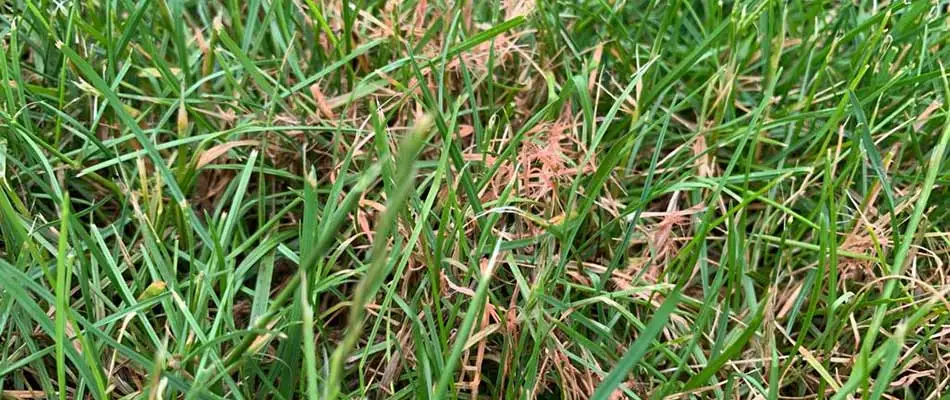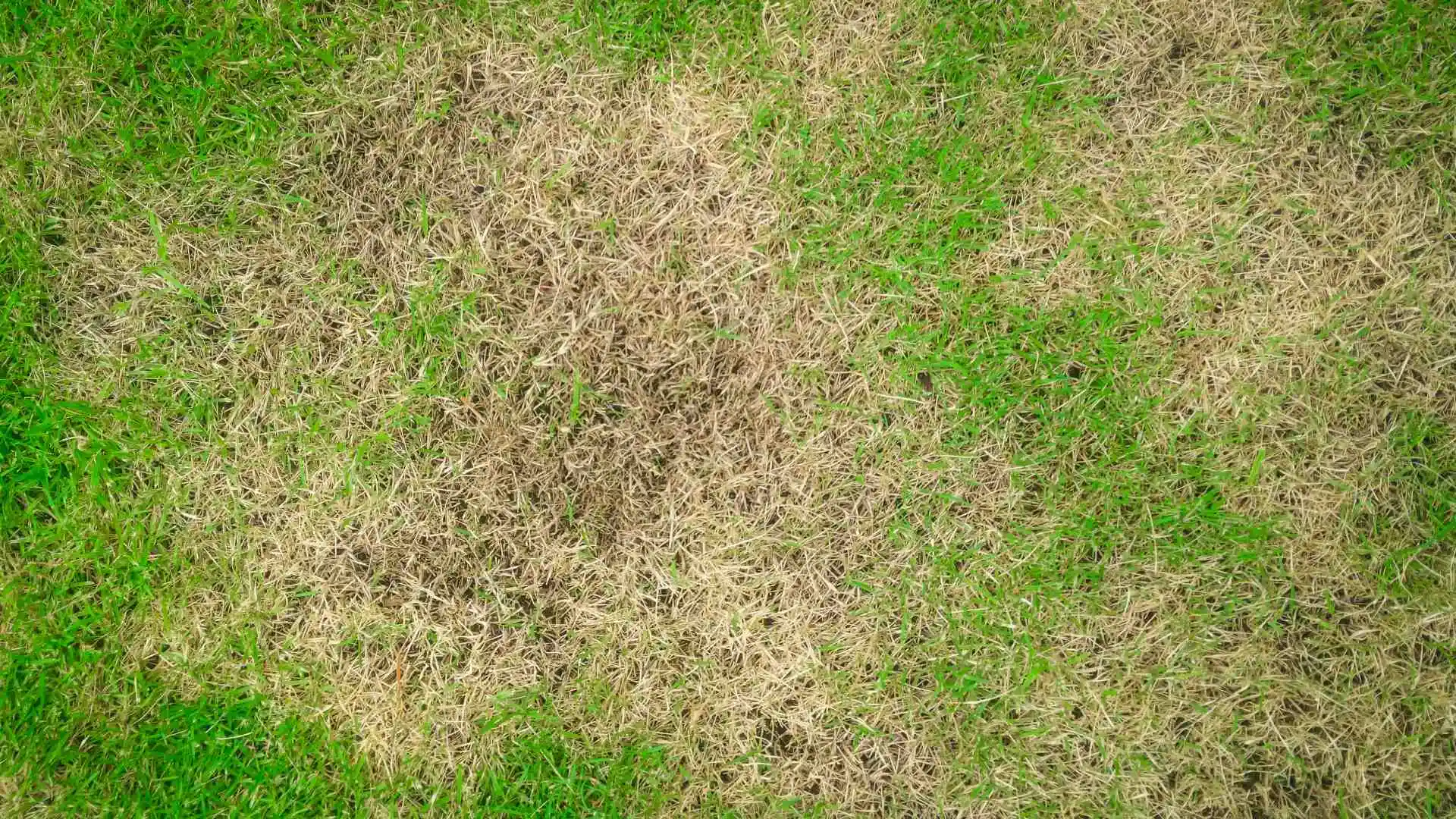You should always be on your toes when it comes to lawn disease, but spring is a particularly vulnerable time of year here in Ohio. After the long winter months bringing cold and damp weather steadily to our lawns, we have to be vigilant in identifying and correcting any disease that may have crept into our property. Three of the most common diseases are snow mold, red thread, and dollar spot, each with its own signifiers and markings. Snow mold is apparent once the snow melts, with matted, crusty patches of grass that are straw-colored and around 6-12" in diameter. Red thread is primarily identified by the red, spiky "threads" that sprout from the tip of the grass blade. Dollar spot will present as small, yellow silver-dollar-sized spots on the grass blades that are ringed in reddish-brown. Keep an eye out for any of these presentations on your lawn so that you can get ahead of any disease that may be trying to take hold of your grass!
1. Snow Mold
Snow mold is one of the most common winter lawn diseases. For the most part, you'll only be able to see it once the snow melts. There will be circular, straw-colored patches of matted and crisp grass, around 6-12" in diameter. Snow mold thrives in extended periods of snow cover and subsequently, regions that are cold, wet, and snowy. It can grow on all types of lawn grasses and is particularly prone to developing when snow falls and piles up onto unfrozen soil.
There are two types of snow mold to be aware of. Gray snow mold affects only the blades, so the grass will regrow. Pink snow mold, on the other hand, affects both the blades and the roots, causing the chances of regrowth to be quite slim.
2. Red Thread

If you start seeing reddish-pink discoloration on your shoes, lawnmower, or lawn tools, you may want to check your grass for red thread disease. Denoted by red, spiky growths protruding out of the tip of grass blades, red thread loves to grow in cool, wet weather among undernourished grass with poor air circulation. It may also develop small, cotton-candy-like strands wisping around the grass blades. The further along the disease develops, the more common seeing the actual protrusions will become, and they can extend over 1/4 inch from the tips of grass blades.
Red thread patches can get up to three feet in diameter.
3. Dollar Spot
Dollar spot causes grass blades to look water-soaked and develop yellow spots ringed in a reddish-brown color. As it spreads across the lawn, the patches start around 2-6" wide, but then turn into large, irregular patches. There may also be a cobweb-type growth appearing between the blades. Dollar spot thrives in climates with warm, humid days and cool nights, and on grasses that are under fertilized or suffering from water stress from drought or excess moisture. In the early morning dew, you may also be able to see that your grass has developed short, fuzzy, white mycelium.
Do you see any of the above lawn disease signs on your property? We can help – call us today!

With a focus on dependable and high-quality services, our team at Free Spray Lawn Care is determined to provide only the best lawn and landscape solutions to help clients in Mansfield, Wooster, Strongsville, and nearby cities in Ohio. Our knowledgeable and friendly team members will go above and beyond for you, every time, as they have been doing every day since 2000. If you need our lawn disease service for your property, call us today at 419-529-5296 to get a quote!



Comments (0)
Thanks for your comment!
Thanks for your feedback! Your comments have been successfully submitted! Please note, all comments require admin approval prior to display.
Error submitting comment!
There is a problem with your comment, please see below and try again.